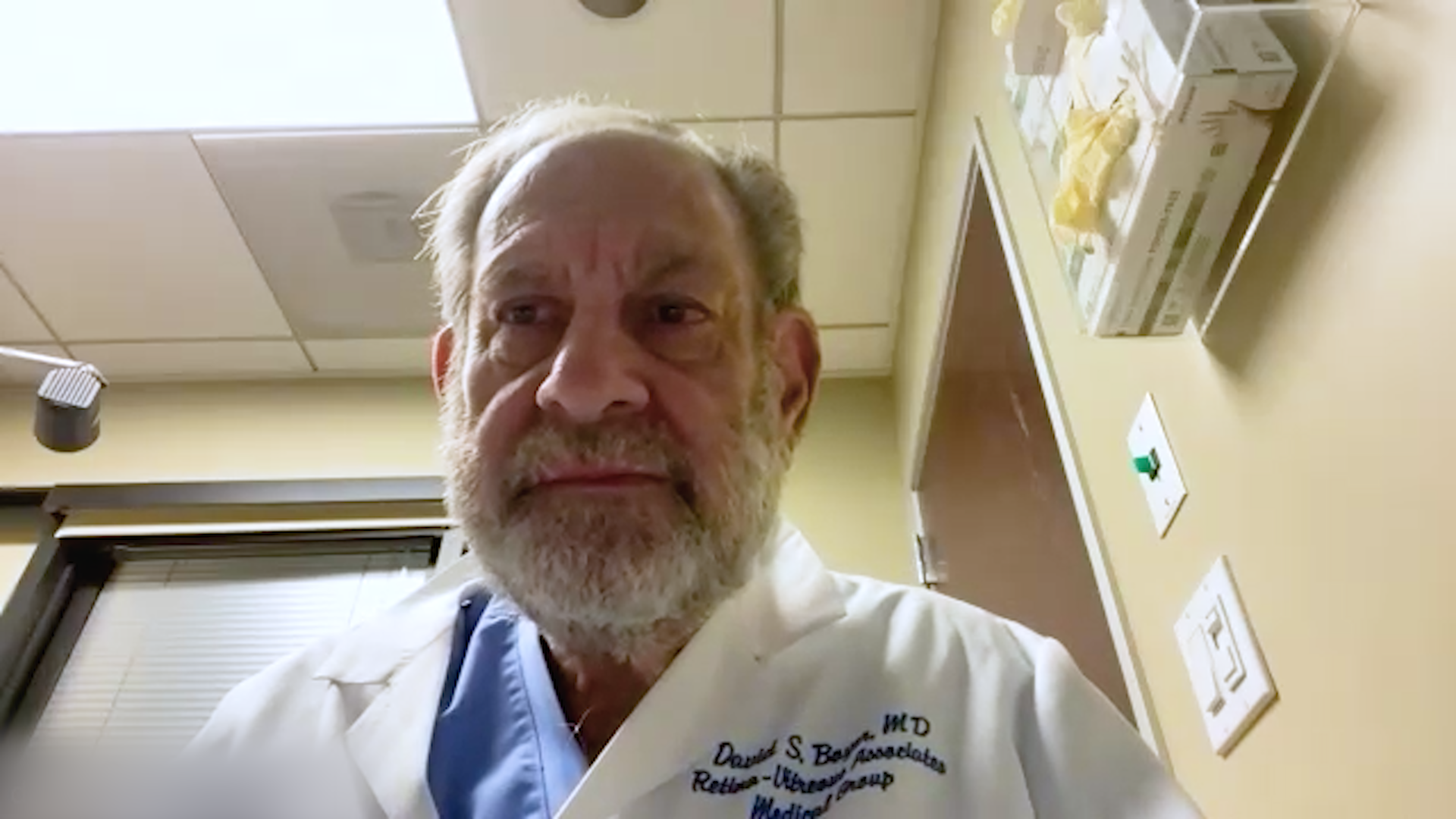David Boyer, ARVO 2023: Phase IIb RESTORE trial: MCO-010 optogenetic therapy for vision restoration in patients with retinitis pigmentosa
The RESTORE trial (NCT04945772) is a phase 2b randomized, sham-controlled, multi-centre, multi-dose, double-masked clinical trial evaluating the efficacy and safety of MCO-010 optogenetic therapy in adults with retinitis pigmentosa. MCO-010 is an ambient-light activatable Multi-Characteristic Opsin (MCO) optogenetic therapy for vision restoration. It was a pleasure to speak with Prof. David Boyer (Retina Vitreous Associates Medical Group, Los Angeles, CA, USA) around the mechanism of action of MCO-010, the results of the RESTORE trial and what the next steps in clinical development of MOC-010 is.
The presentation entitled ‘Efficacy and safety of MCO-010 optogenetic therapy for vision restoration in patients with severe vision loss due to retinitis pigmentosa: A phase 2b randomized, sham-controlled, multi-center, multi-dose, double-masked clinical trial (RESTORE)’ was presented at the Association for Research in Vision and Ophthalmology Annual Meeting, May 05-09, 2023
Questions:
- What is MCO-010 and what is its mechanism of action? (0:19)
- What are the aims, design, and eligibility criteria of the RESTORE study? (1:18)
- What were the efficacy and safety findings? (2:37)
- What will be the next steps in the clinical development of MCO-010? (3:38)
Disclosures: David Boyer has nothing to disclose in relation to this video interview.
Support: Interview and filming supported by Touch Medical Media Ltd. Interview conducted by Shanice Allen.
Filmed in coverage of the virtual ARVO 2023.
Click here for more content on retinal diseases
Transcript
My name is David Boyer. I’m a senior partner at Retina Vitreous Associates in Los Angeles, California, and an adjunct Clinical Professor at USC Keck school of medicine.
What is MCO-010 and what is its mechanism of action?
MCO-010 is an injection that allows bipolar cells that normally do not transmit or are not light sensitizing cells to become sensitizing. So, there are different ways that optogenetics works. Basically, when you have the condition where the cones are destroyed or damaged, the next layer above the bipolar cells, the ganglion cells, if you can transfect them to make them viable light producing cells, you may be able to improve the quality of vision, improve the light that they need for these patients to reduce their peripheral vision loss. So MCO goes to the bipolar cells and transfects them to become light sensitizing cells just as codes are.
What are the aims, design, and eligibility criteria of the RESTORE study?
Well, the RESTORE study actually took very, very poor vision patients. These are patients who vision was 20 over 1,500 at the optimum and most of them had even less than that and injected the material into different groups of patients. There was different dose levels to try to see if there was a dose response but the dose response didn’t seem to come and there was a sham group that could be followed just to see the effects of the treatments. The treatment then was evaluated in three different ways. One way was visual acuity based on Landolt-C circles. The other was shape discrimination and variations in the amount of light necessary to see that. The third was the motility maze where we altered the lighting settings to see if the patients could identify an object at the end of the room and go to it without hitting barriers. So it basically tests a little bit of peripheral vision and the ability to find a light at the end of a room.
What were the efficacy and safety findings?
Well, the efficacy was good. They did not meet their primary endpoint in the study. Primary endpoint was mobility testing. Again, the soon to be validated endpoint. But when they looked at the overall improvements, you know, comparing patients who had, let’s say, an improvement in at least two log units of light in the maze and two log units of light in the shape discrimination or a change in visual acuity that was felt to be an importance of 0.6 log units and visual acuity. You found that this started to show that the treatment effect was certainly present. So, when you combine these end points, there were certainly more patients in the treatment group that had overall improvements compared to the non-treatment group.
What will be the next steps in the clinical development of MCO-010?
Well, I think the next step is, you know, we know that the drug appears to be relatively safe. There was some inflammation. It was treated early with systemic steroids for a short period of time. There were some patients, even after a year, that did require some degree of topical drops. But for this condition, where there really is no other treatment. Topical drops are very small, minor inconvenience. So, I think that, you know, working out the inflammation a little bit better would be the next step. I think looking to see patients with perhaps a little better vision to see better efficacy, it may be that we have to look at the OCTs very carefully to see if the bipolar cells are even present in some of these eyes. I looked at some of the OCT images and I can tell you that there was very little in the way of any cells. These were end stage disease patients that basically hardly had any vision at all. So I think, you know, we’re reviewing what has been done and then trying to define potentially a group of patients that would have further benefit from this treatment, that would be the next steps.
Subtitles and transcript are autogenerated






